On a spring block system shown in figure-4.56, a time varying force F=5t N is applied on 2 kg mass. After 10 s, velocity of 3 kg mass is 30m/sec. Find velocity of 2 kg mass at this instant.

Step by step video & image solution for On a spring block system shown in figure-4.56, a time varying force F=5t N is applied on 2 kg mass. After 10 s, velocity of 3 kg mass is 30 m//sec. Find velocity of 2 kg mass at this instant. by Physics experts to help you in doubts & scoring excellent marks in Class 11 exams.
Updated on:21/07/2023Topper's Solved these Questions
- LINEAR MOMENTUM & ITS CONSERVATIONBOOK - PHYSICS GALAXY - ASHISH ARORACHAPTER - LINEAR MOMENTUM & ITS CONSERVATIONEXERCISE - Practive Exercise
28 Videos
- LINEAR MOMENTUM & ITS CONSERVATIONBOOK - PHYSICS GALAXY - ASHISH ARORACHAPTER - LINEAR MOMENTUM & ITS CONSERVATIONEXERCISE - Discussio Q
28 Videos
- KINEMATICSBOOK - PHYSICS GALAXY - ASHISH ARORACHAPTER - KINEMATICSEXERCISE - Unsolved Numerical Pro.
83 Videos
- NEWTONS LAWS OF MOTIONBOOK - PHYSICS GALAXY - ASHISH ARORACHAPTER - NEWTONS LAWS OF MOTIONEXERCISE - Unsolved Numerical Problem
81 Videos
Similar Questions
A bomb of mass 12 kg explodes into two piece of masess 4 kg and 8kg . The velocity of mass 4 kg is 20 m/s . Find the velocity of mass 8 kg
View SolutionA bomb of mass 12 kg explodes into two pieces of masses 4 kg and 8 kg. The velocity of mass 4 kg is 20 m/s. Find the velocity of mass 8 kg.
View Solution
Knowledge Check
Two blocks of masses 4 kg and 2 kg are connected by a string. The arrangement is placed on a rough horizontal surface as shown in figure. A time varying force F = 2t. Newton is applied to 2 kg block. The variation of friction force (f2) on the 4 kg block, as a function of time, is represented by the graph :
 A
A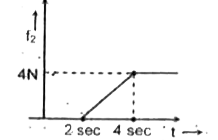 B
B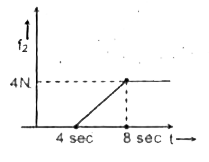 C
C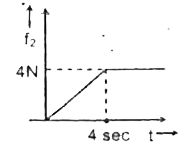 D
D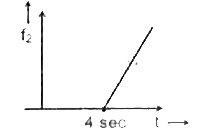
The masses of 10 kg and 20 kg, respectively, are connected by a light spring as shown in the figure. A force of 200 N acts upon the 20 kg mass. At the instant shown, the 10 kg mass the acceleration of 12m/s2. The acceleration of 20 kg mass is
 A12m/s2B4m/s2C10m/s2DZero
A12m/s2B4m/s2C10m/s2DZeroTwo particles are shown in figure. At t=0 a constant force F=6N starts acting on 3kg. Find the velocity of circle of mass of these particle at t=5s.
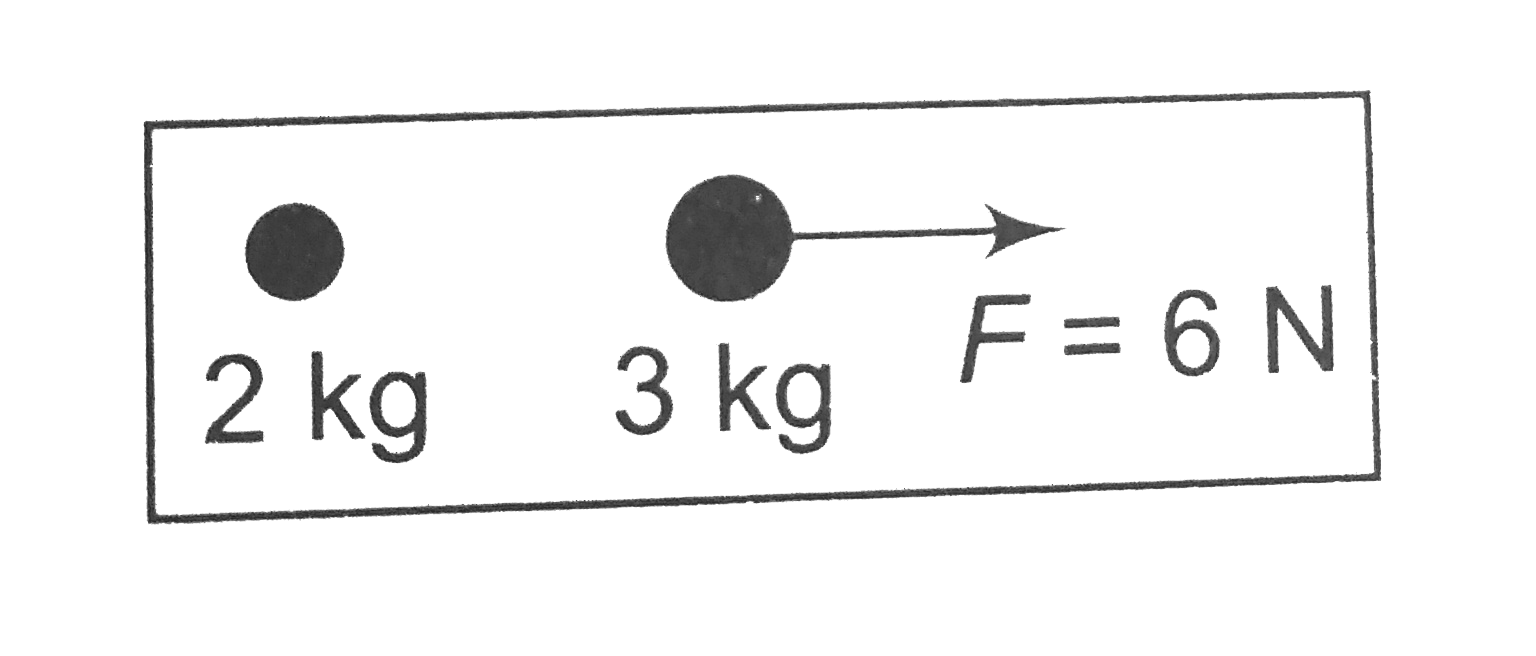 .A5m/sB4m/sC6m/sD3m/s
.A5m/sB4m/sC6m/sD3m/s
A block A of mass 10kg rests on a second block B of mass 8kg. The coefficients of friction at various surfaces are shown in figure. A horizontal force of 100N is applied on upper block at t=0. Determine the velocity of block A relative to block B after 0.01s of application of force. The system is initially at rest. Express your answer in cm/s. Take g=10m/s2.
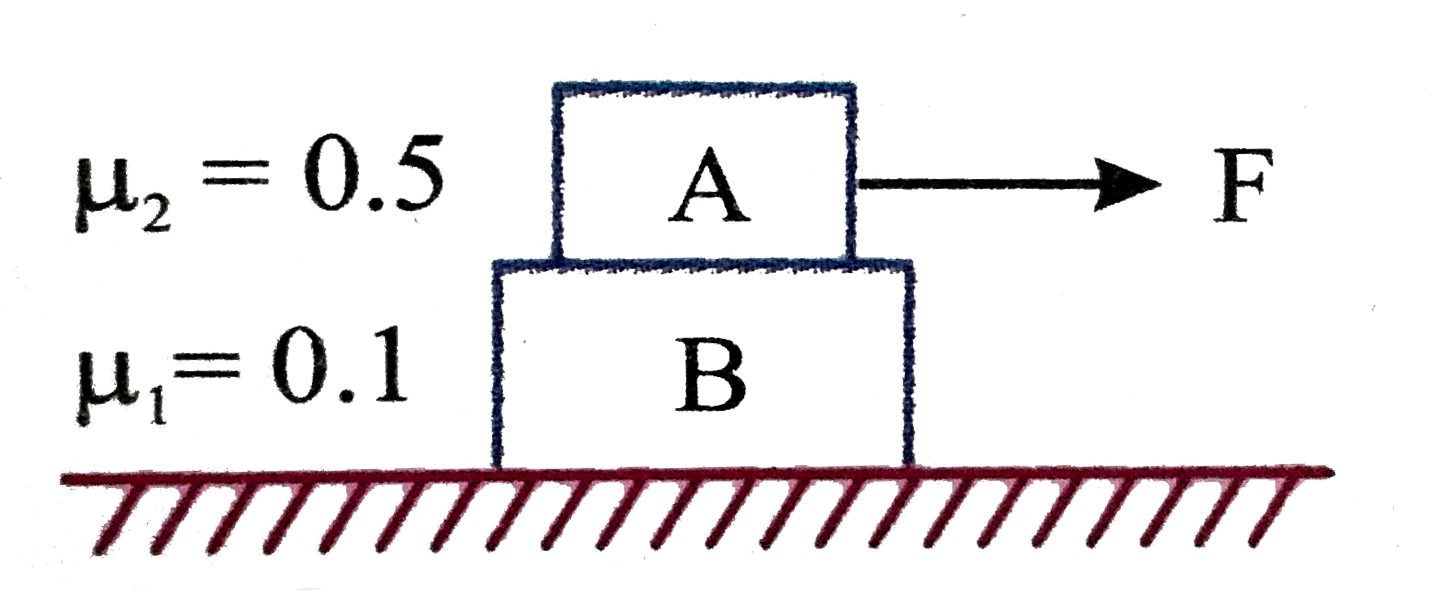
View Solution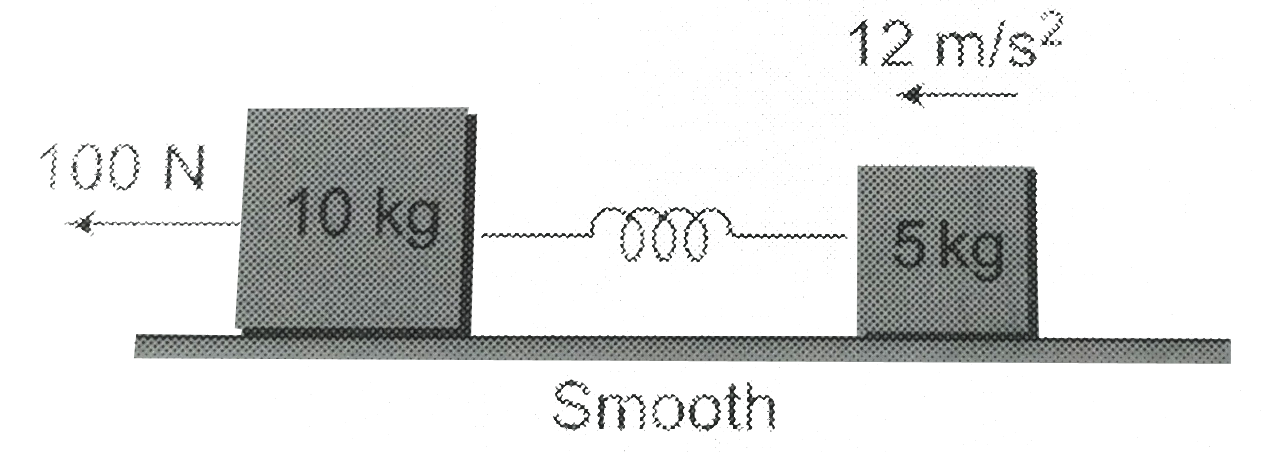
Two blocks of masses 5 kg and 10 kg are connected by a massless spring as shown in the diagram. A force of 100 N acts on 10kg mass as shown. At a certain instant the acceleration of 5 kg mass is 12 m/s2 find the force in the spring and acceleration of 10 kg mass.
View SolutionTwo blocks of masses 10 kg and 20 kg are connected by a massless spring and are placed on a smooth horizontal surface. A force of 200 N is applied on 20 kg mass as shown in the diagram. At the instant, the acceleration of 10 kg mass is 12ms−2, the acceleration of 20 kg mass is:

View SolutionThe masses of 10 kg and 20 kg respectively are connected by a massless spring as shown in figure. A force of 200 N acts on the 20 kg mass. At the instant shown, the 10 kg mass has acceleration 12m/sec2 . What is the acceleration of 20 kg mass

View SolutionThe masses of 10kig and 20kg respectively are connected by a massless spring as shown in figure. A force of 200N acts on the 20kg mass. At the instant shown, the 10kg mass has acceleration 12m/sec2 . What is the acceleration of 20kg mass?

View Solution
